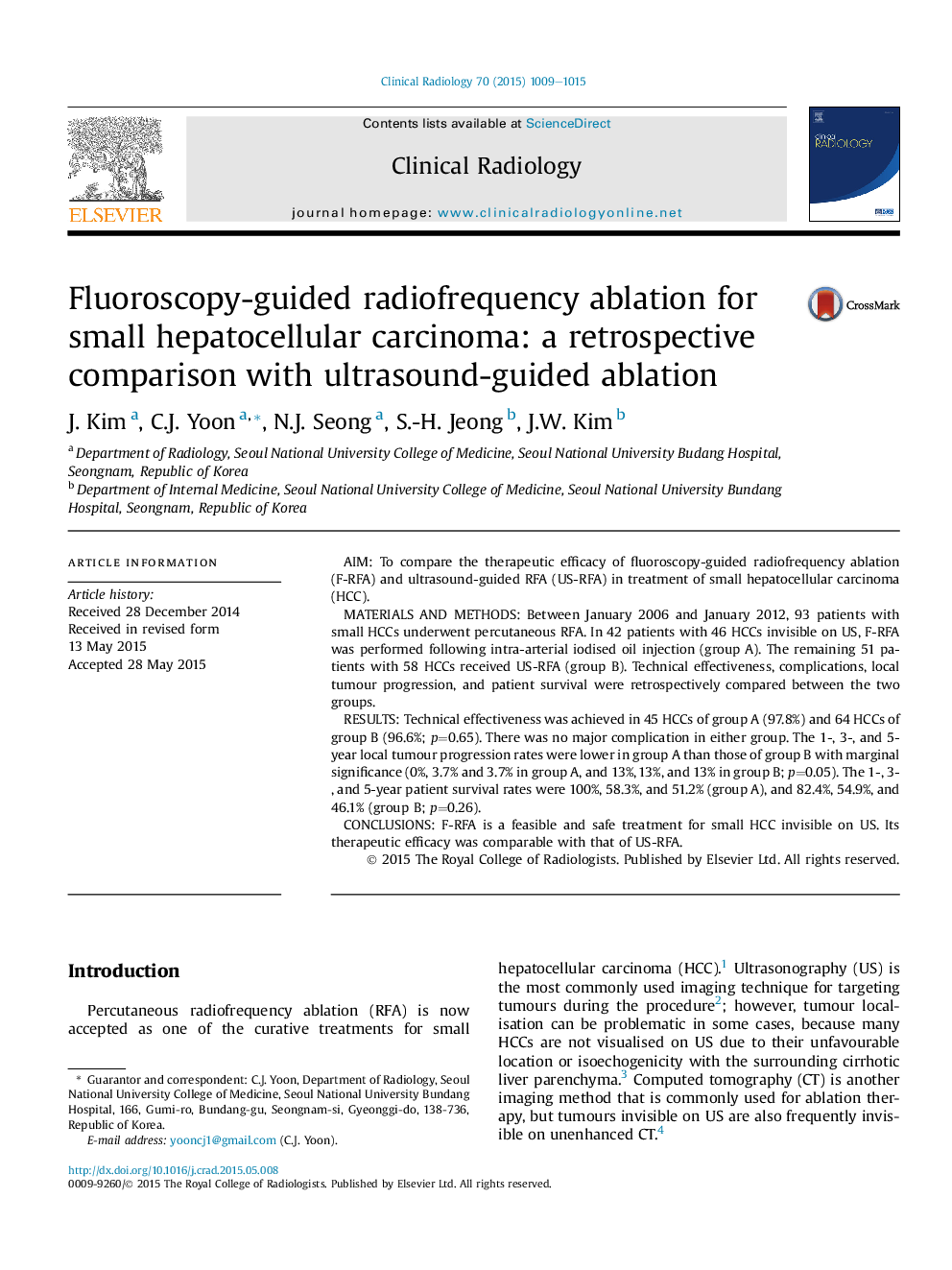| Article ID | Journal | Published Year | Pages | File Type |
|---|---|---|---|---|
| 6190796 | Clinical Radiology | 2015 | 7 Pages |
â¢Fluoroscopy-guided radiofrequency ablation can treat small hepatocellular carcinoma invisible on ultrasonography.â¢Fluoroscopy-guided radiofrequency ablation can treat small hepatocellular carcinoma with unfavorable location.â¢Therapeutic efficacy of fluoroscopy-guided radiofrequency ablation is comparable with ultrasound-guided procedure.
AimTo compare the therapeutic efficacy of fluoroscopy-guided radiofrequency ablation (F-RFA) and ultrasound-guided RFA (US-RFA) in treatment of small hepatocellular carcinoma (HCC).Materials and methodsBetween January 2006 and January 2012, 93 patients with small HCCs underwent percutaneous RFA. In 42 patients with 46 HCCs invisible on US, F-RFA was performed following intra-arterial iodised oil injection (group A). The remaining 51 patients with 58 HCCs received US-RFA (group B). Technical effectiveness, complications, local tumour progression, and patient survival were retrospectively compared between the two groups.ResultsTechnical effectiveness was achieved in 45 HCCs of group A (97.8%) and 64 HCCs of group B (96.6%; p=0.65). There was no major complication in either group. The 1-, 3-, and 5-year local tumour progression rates were lower in group A than those of group B with marginal significance (0%, 3.7% and 3.7% in group A, and 13%, 13%, and 13% in group B; p=0.05). The 1-, 3-, and 5-year patient survival rates were 100%, 58.3%, and 51.2% (group A), and 82.4%, 54.9%, and 46.1% (group B; p=0.26).ConclusionsF-RFA is a feasible and safe treatment for small HCC invisible on US. Its therapeutic efficacy was comparable with that of US-RFA.
